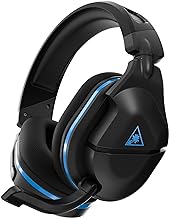Elder Scrolls Online Tips: Magblade PvP Build Update 43
Magicka Nightblade, or Magblade, is one of the most versatile and fun classes to play in Elder Scrolls Online (ESO). Whether you’re dishing out damage from the shadows or weaving in some sneaky healing, this class has got game. It’s crucial to stay updated with the latest changes, especially with Update 43, which brings some significant shifts.
PvP in ESO is a whole different ball game compared to PvE. You need a mix of sneakiness, raw power, and a good sense of when to attack or retreat. Having a solid PvP build is essential. This is where a finely tuned Magblade build comes in, helping you maximize your strengths and cover your weaknesses.
Update 43 has brought in a fresh wave of changes. Knowing what’s new can give you the upper hand in PvP. For instance, there are new buffs to certain abilities, tweaks in skill costs, and even changes to some key passive abilities. These adjustments can shake up your gameplay, making it more thrilling and, if you’re prepared, giving you an edge over others.
In the next sections, we’ll dig into the nitty-gritty of optimizing your skills, gearing up with the best equipment, and mastering gameplay strategies that’ll make you a feared opponent in PvP.
Optimizing Skills and Abilities for Magblade PvP
Success in PvP starts with having the right skills on your bar. For a Magblade, this means prioritizing skills that deliver high burst damage and provide sustain. Concealed Weapon and Surprise Attack are your bread and butter for unleashing powerful hits quickly. While Concealed Weapon gives you a speed boost when slotted, Surprise Attack can stun opponents from stealth, giving you the upper hand.
For sustain and survivability, Siphoning Attacks is a must. It helps regenerate both Magicka and Stamina with each light or heavy attack, allowing you to stay in the fight longer. Swallow Soul is another great pick, providing a steady stream of healing over time as you deal damage. Blood for Blood can also keep your health up while dishing out major damage.
Passive skills might not be as flashy as the active ones, but they’re just as critical. Try the Catalyst passive for boosting Ultimate generation whenever you drink a potion. Initiative, on the other hand, buffs your Critical Damage and Critical Healing after leaving stealth, giving you an edge in those first crucial seconds of combat.
With the latest update, new changes have come in that you need to be aware of. Some skill costs have been adjusted, making resource management even more essential. There are also minor tweaks to certain abilities, which may seem small but can have a big impact during a fight. Staying updated on these changes can help you adjust your playstyle and keep you competitive. So don’t ignore the patch notes; they’re a treasure trove of helpful info!
Gear, Traits, and Enchantments for Dominating in PvP
Choosing the right gear for your Magblade PvP build is like picking the right weapon for battle. You want to find sets that enhance your strengths and shore up any weaknesses. A few top picks for Magblade include the Mechanical Acuity set, which grants guaranteed critical strikes, and the Shacklebreaker set, offering a nice balance of Magicka, Stamina, and recovery. Another great option is the Burning Spellweave set for its spell damage boost and fire damage proc.
When it comes to traits, the right ones can elevate your gameplay. Impenetrable is almost a must-have for reducing incoming critical damage. If your build leans towards heavy spellcasting, the Infused trait on staves can increase the power of your enchantments, boosting your overall damage output.
Enchantments are the finishing touch on a solid build. Magicka Recovery glyphs can keep your resources high, while Spell Damage glyphs add a punch to your attacks. Don’t overlook defensive enchantments either; having a bit of extra health or Magicka recovery can be the difference between victory and defeat.
Aligning your chosen gear, traits, and enchantments with your skills will give you a build that’s both powerful and sustainable. This balance isn’t just about dishing out damage; it’s about staying in the fight long enough to take down your opponents. Grinding for the ideal gear might take time, but the payoff in PvP effectiveness is huge.
Gameplay Strategies and Tips for Magblade PvP Success
Getting the right build is just the beginning; how you play matters just as much. One key strategy is mastering your rotation. Opening with a surprise attack from stealth can set the tone, followed by a heavy burst combo. Use Concealed Weapon for quick hits and follow it up with Impale or Soul Harvest to finish off low-health enemies.
Survivability is crucial in PvP. Use Shade to teleport out of sticky situations and keep Healing Ward or Swallow Soul active for sustained healing. Combining these with the right timing on Siphoning Attacks ensures you’re always regenerating resources.
Positioning and movement are your best friends when it comes to evading attacks and outmaneuvering opponents. Stick to the edges of the battlefield to avoid getting swarmed. Use Shadowy Disguise to move stealthily and get the drop on enemies. Sneaking in and out of combat keeps your enemies guessing and slows down their attempts to take you down.
Adaptability is your secret weapon. Carefully watching your opponent’s moves allows you to tweak your strategy on the fly. Know when to go all-out and when to play defensively. Dodge rolling, blocking, and breaking free from crowd control effects can turn the tide in tight situations. The recent updates demand a flexible approach, so constantly adjust your tactics based on the new meta and the specific enemies you face.
Combining these game strategies with your optimized skills, gear, and enchantments ensures you’re not just surviving but thriving in PvP. Taking the time to master these techniques will help you become a formidable Magblade, capable of taking on any challenge the battlefield throws your way.


